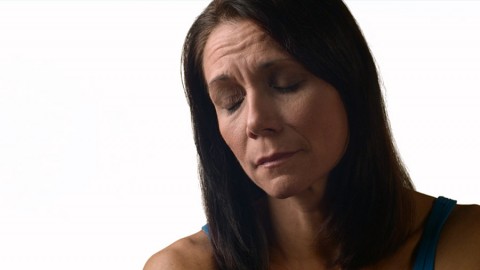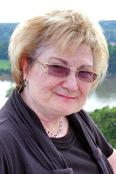This is the fourth of a series of articles based on the prayer of St. Francis of Assisi beginning, “Lord, make me an instrument of your peace.”

Clarksville, TN – The short days of winter can set up feelings of despair in the best of us. We long for the green leaves of spring, the flowers, the warmth that pervades the atmosphere, the lightness of spirit that comes in hearing the songs of birds and the renewal of the Earth’s beauty.
Almost everyone at one time or another suffers from “winter blues” when you want to sleep more and eat more and wish away the cold winter months.
For others, these short days actually set up a chemical reaction in the brain now branded SAD (seasonal affective disorder). Symptoms can begin as early as September and continue through April, but the worst days are the darkest days when one feels that he gets up in darkness and returns from work in darkness.
The list of symptoms for SAD is rather extensive. It includes sleep problems to the point that one sleeps too long but wakes up feeling just as tired as when he went to bed. Other people just can’t seem to even get out of bed while still others simply have to have a nap every afternoon.

Others with SAD begin overeating as they crave carbohydrates; naturally, weight gain is the result.
For some who suffer with SAD, depression and despair mixed with anxiety or guilt overwhelm the person until daily tasks become increasingly difficult. Some sufferers become lethargic and complain that everything is too much of an effort and that they are too tired to cope at all.
As can be imagined, the above symptoms can lead to family problems and problems in social interactions where the person begins to avoid others or is increasingly irritable. With these behaviors can come a loss of feeling and libido that affect one’s marriage.
Some people with SAD actually acquire physical symptoms such as joint pain, digestive problems, and even lowered resistance to infection.
Young people who become victims of SAD may develop behavioral problems and cause themselves even further grief.
The instance of SAD grows proportionally larger with the greater distance from the equator. Women tend to be more susceptible than men, but children and adolescents can also fall victim.
Amazingly, some people have seasonal affective disorder during the spring and summer months. The difference in symptoms appears to be insomnia, agitation, a decrease in appetite leading to weight loss, and an increase in sex drive.
A third type described by the Mayo Clinic web site is reversal seasonal affective disorder; this is a type of bipolar disorder. These victims become manic and may exhibit elevated mood, agitation, rapid thoughts and speech. Their social life may become much more active and they may show unbridled enthusiasm beyond what the situation warrants. They may have a persistent elevated mood and may become hyperactive.
To combat this situation, many people take vacations during the winter months to tropical locations. Others resort to sitting for half an hour minimum per day under intense lights; they need to be at least five times brighter than those normally found in an average home to be effective.
Treatments for SAD may involve light therapy with lamps that are five times as bright as those in an average home; the person may sit in this light for extended periods of time each day. Others may require medications or even psychotherapy.
Some recommend a change in diet by eating more fish, avocados, beans, bananas, wheat germ, porridge, oats, brown rice and wholemeal pasta. Foods that help increase serotonin, the chemical in the brain that makes you feel happy, are those most often suggested. Of course, drinking lots of water and non-caffeinated drinks are advised so that the person can keep hydrated.
Vitamin D, produced in the body through sunlight on the skin, can decrease during winter months. Some sufferers of SAD take extended vacations in warm climates to help ward off the syndrome.
Increased exercise is advised for most patients. Some forms of even clinical depression have been treated through running, sports and others types of exercise to increase the feeling of wellness.
Hope is the wish for something that fills one with confidence or the fulfillment of desire. For the person who suffers from SAD or any other type of depression, it is difficult to comprehend any form of hope when the grips of these feels of despair nearly overwhelm one.
Anyone who consistently seems to be in the throes of these symptoms should see a doctor and be diagnosed. A further treatment is to surround oneself with people who have a hopeful outlook on light; if most of your friends seem to be griping and complaining constantly, maybe it’s time to look for new friends.
When any of us begins to decide it’s really not worth getting up in the morning, we need to remind ourselves that “this too shall pass!” Just as “faith is the essence of things hoped for,” we need to hold on to the reality that life will get better and for now, we are just in a temporary low.
When anyone becomes too focused on depressing thoughts, it is often helpful to look around you at the situations in which others find themselves—and be thankful that our little problems are not the monumental ones that some others have to face.



